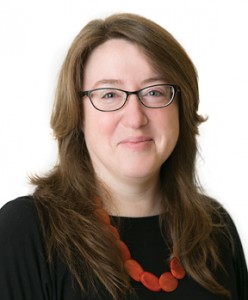Sustainability | Next, Do These 5 Things
Sustainability is no longer to be relegated to the “green team” (as awesome as they can be!). It is no longer a once-a-year theme we address in April or on Earth Day. This topic is, or should be, front-and-center in how we think about everything we do.
 I would like to thank all of my colleagues who reached out after my last column, “On a Mission,” to express excitement that sustainability has been added to the American Library Association’s list of Core Values of Librarianship. The majority of people shared virtual fist pumps and high-fives, and a handful of others were cautiously optimistic but had very real questions about what to do to make it meaningful.
I would like to thank all of my colleagues who reached out after my last column, “On a Mission,” to express excitement that sustainability has been added to the American Library Association’s list of Core Values of Librarianship. The majority of people shared virtual fist pumps and high-fives, and a handful of others were cautiously optimistic but had very real questions about what to do to make it meaningful.
Here’s my take: We just took this topic mainstream. Sustainability is no longer to be relegated to the “green team” (as awesome as they can be!). It is no longer a once-a-year theme we address in April or on Earth Day. This topic is, or should be, front-and-center in how we think about everything we do. Thanks to the addition of this item to the core values list, we are one giant step closer to changing the mindset of our profession to ensure that the choices we make across our libraries have a very clear vision of improving the lives of those we serve using the triple bottom line as our compass setting. What should library professionals do next?
- Learn everything you can about sustainability, from reading the final report of the American Library Association’s Special Task Force on Sustainability and books on the topic to attending related conference programs, workshops, and webinars.
- Use a tool provided by the New York Library Association, the Road Map to Sustainability, which is available for free as a PDF or mobile app or $3 for a hard copy, to gather your thoughts, track what you are learning, and plot out next near term and long term steps and goals.
- Compare notes with other stakeholders in your organization. Start talking about what sustainability looks like currently from the standpoints of operations, policymaking, program and service design, and more. Would your public say you are known for sustainability? Would your co-workers agree that the organization is environmentally conscientious? Good fiscal stewards? Focused on social equity issues? The answers you get will help identify the gap between what your reputation is and what you want it to be.
- Once there is buy-in that there is work to be done, it’s time to embed this value into your organizations, starting with origin documents like policies, plans, and job descriptions. This provides the permission and structure to prioritize this work.
- Next, deploy and activate knowledge. Help to educate staff and other stakeholders as to what sustainability is all about and what that looks like in your organization. What happens next will be shaped by your specific situation—from your particular facility to the region of the world your library is located in to the administrative structure you operate in—but there are numerous examples to draw from, so you do not need to re-invent the wheel.
This is hard work but it is big, meaningful work. Mindset shifts do not happen in the span of a meeting or a webinar. This is long-term work that requires a “growth” rather than a “fixed” mindset. Be open to feeling uncomfortable. You are embarking on a journey to think and act in a new way and to inspire others to do so as well; to challenge the status quo of how decisions are made in your organization and who influences those decisions. You cannot do this work alone.
In my organization we have been engaged in this for two years. We have introduced new vocabulary into our organizational culture, formed new teams to think through how we do things, and taken the time to help educate staff on the triple bottom line and how to make decisions when the bottom line isn’t the only factor we need to consider. So far we have changed the way we manage technology in our facility, how we do hospitality, and how we manage the office supply closet.
These may sound like small things, but they dovetail with the very large work we are doing to support our member libraries in their bid to evolve into what their communities need them to be.
That sounds like a weird leap—how does recycling in an office building translate to libraries that are more responsive and relevant to their communities? While I’ve written a whole book on the topic if you'd like to learn more about this, for now I'll refer you to a quote from futurist Alvin Toffler to illustrate my point: “You’ve got to think about big things while you’re doing small things, so that all the small things go in the right direction.”
Step-by-step, person-by-person, decision-by-decision—that’s how you effect a shift in mindset.
Rebekkah Smith Aldrich is Executive Director, Mid-Hudson Library System, Poughkeepsie, NY; a judge for LJ’s 2015 New Landmark Libraries; author of Sustainable Thinking: Ensuring Your Library’s Future in an Uncertain World (ALA); and a 2010 LJ Mover & Shaker.
RELATED
ALREADY A SUBSCRIBER? LOG IN
We are currently offering this content for free. Sign up now to activate your personal profile, where you can save articles for future viewing









Add Comment :-
Comment Policy:
Comment should not be empty !!!